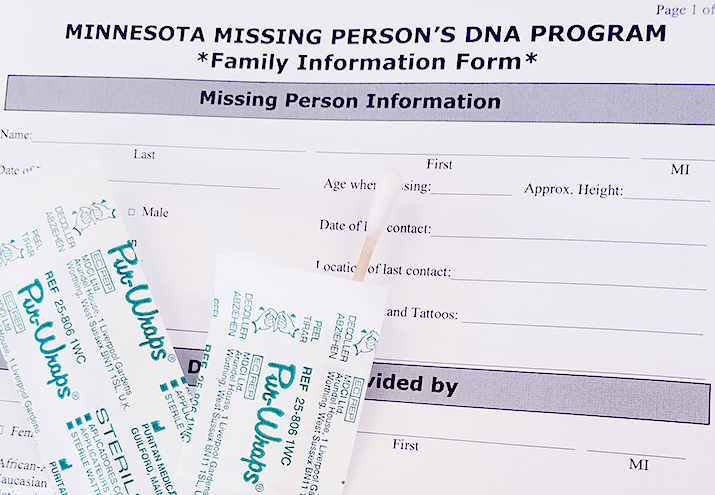DNA testing: Answers for Minnesota missing persons’ families
Sept. 28, 2017
 |
| Photo: A BCA scientist tests unidentified remains for DNA in hopes that it will match DNA in the missing persons database. |
If you’ve ever loved someone, you can imagine (or perhaps you already know) the heartbreak of losing them. And losing them to a known factor – disease, for example, or an accident – would be terrible enough. But never knowing what happened to them would be even worse.
That’s why the Minnesota Bureau of Criminal Apprehension (BCA) has spent the last few years on an effort to help families find answers. They’ve started a statewide campaign to bring forward the families of missing persons (no matter how long they’ve been missing) to give DNA samples.
Here’s why it’s important: before DNA testing was available, unidentified human remains were either kept at a medical examiner’s office or buried as an unknown person. Now that DNA testing is possible, the BCA has been conducting DNA testing on these remains, and then entering the information into the FBI’s unidentified remains database for comparison with family member DNA in Minnesota and FBI missing persons databases.
This technology is only as good as the extent of the database, though. In other words, if the BCA obtains a DNA profile from an unidentified person, but neither they nor their family’s DNA is in the missing person database, the BCA can’t determine their identity. Right now, that’s the case for the dozens of unidentified remains for which the BCA has obtained a DNA profile. We just need their family to come forward and provide a DNA sample.
If the families of missing persons come forward to provide DNA samples, there’s a much greater chance for identification of their missing loved one. The BCA is asking families of missing persons to contact the BCA to arrange for the collection of saliva – this is basically a simple swabbing of the inside of the mouth. Families are also asked to bring their missing relative’s name, date of birth, photos, dental records, and items that may contain that person’s DNA (such as a toothbrush or a hair brush, for example), along with the exact or approximate date and location the person went missing.
Since the BCA began this effort, five people have been identified through DNA matches to family members. Keeping the DNA from both unidentified remains and family members who come forward in the national missing persons databases increases the chances of finding a match at some point in the future.
Considering the fact that approximately 225 Minnesotans have been missing for more than a year, and more than 100 sets of unidentified remains exist in Minnesota, we know that there are more answers to be had. The news won’t be good, but it will be something. And sometimes that’s enough to give worried families the opportunity to begin to grieve and heal.

